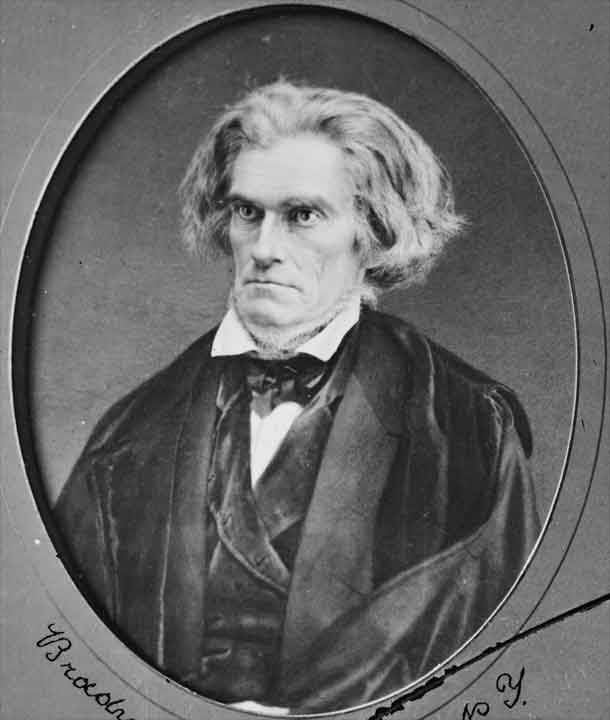Calhoun, John

Vice President,
Secretary of War,
Secretary of State
(1782-1850)
Born in South Carolina of Irish Presbyterian parentage, Calhoun studied at Yale University and became a lawyer. Elected to the US Congress, he supported the War of 1812 (1812-15) and the protective tariff. In 1817, Calhoun became Secretary of War under President Monroe, succeeding in reorganizing the War Department. From 1825 to 1832, he served as Vice President in the administrations of John Quincy Adams and Andrew Jackson. In 1829, Calhoun stated his belief that states had the right to nullify laws they considered unconstitutional. He presented his theory of state rights in his 1831 "Address to the People of South Carolina." When South Carolina passed the Nullification Ordinance in 1832, Calhoun resigned as Vice President and entered the US Senate. There he led the states' rights movement and supported the interests of slave-holding states. He became Secretary of State and, in 1844, signed the treaty annexing Texas. Returning to the Senate, he opposed the war with Mexico (1846-7). Along with Henry Clay and Daniel Webster, Calhoun was part of the "great triumvirate" of American political orators of their period.
John James Audubon was born in what is now Haiti on April 26, 1785, but was taken to France at an early age, where he studied geography, music, fencing, and drawing. Coming to the United States in 1803, he lived the life of a country gentleman, soon developing a keen interest in American birds. In 1807, he opened a general store in Louisville, Kentucky. The following year, however, he married and became increasingly neglectful of business, spending much of his time exploring the woods and making drawings of birds. In 1820, after his last business venture ended in bankruptcy, he decided to devote himself to his ornithological and zoological interests.
Six years later, he found an engraver in London to publish his Birds of America (1827-38), containing more than 1000 figures of about 500 species. Audubon's fine work was immediately recognized: in 1827 he was elected to the Royal Society of Edinburgh; and upon returning to the United States in 1831, he was acclaimed as one of the greatest American naturalists.
After making several trips to Texas, Florida, and Louisiana, hereturned to Edinburgh in 1834 to continue writing Ornithological Biography (5 vols., 1831-38), the text to accompany the illustrations of his previous work, Birds of America. In 1839, he settled in the United States permanently, beginning work on Viviparous Quadrupeds of North America, which was later completed by his sons and his collaborator, John Bachman. Audubon died in New York City on January 27, 1851.
 >
>